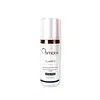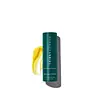What's inside
What's inside
 Key Ingredients
Key Ingredients

 Benefits
Benefits

 Concerns
Concerns

 Ingredients Side-by-side
Ingredients Side-by-side

Water
Skin ConditioningMandelic Acid
AntimicrobialPhosphatidylcholine
EmulsifyingGlycerin
HumectantPropanediol
SolventNiacinamide
SmoothingBeta-Glucan
Skin ConditioningLactic Acid
BufferingRetinal
Skin ConditioningSodium Gluconate
Skin ConditioningEpilobium Angustifolium Flower/Leaf/Stem Extract
Skin ConditioningChlorella Vulgaris Extract
Skin ConditioningArtemisia Umbelliformis Extract
Skin ConditioningMelaleuca Alternifolia Leaf Oil
AntioxidantOcimum Basilicum Leaf Extract
Skin ConditioningHamamelis Virginiana Water
AstringentCucumis Sativus Fruit Extract
EmollientOlea Europaea Leaf Extract
PerfumingChamomilla Recutita Flower Extract
MaskingRubus Chamaemorus Seed Oil
Skin ConditioningRosmarinus Officinalis Leaf Oil
MaskingEucalyptus Globulus Leaf Oil
PerfumingLonicera Japonica Callus Extract
Skin ProtectingLonicera Caprifolium Extract
AstringentCitrus Paradisi Peel Oil
MaskingCyclodextrin
AbsorbentPentylene Glycol
Skin ConditioningSodium Hydroxide
BufferingXanthan Gum
EmulsifyingBenzyl Alcohol
PerfumingPotassium Sorbate
PreservativeAlcohol
AntimicrobialCitric Acid
BufferingWater, Mandelic Acid, Phosphatidylcholine, Glycerin, Propanediol, Niacinamide, Beta-Glucan, Lactic Acid, Retinal, Sodium Gluconate, Epilobium Angustifolium Flower/Leaf/Stem Extract, Chlorella Vulgaris Extract, Artemisia Umbelliformis Extract, Melaleuca Alternifolia Leaf Oil, Ocimum Basilicum Leaf Extract, Hamamelis Virginiana Water, Cucumis Sativus Fruit Extract, Olea Europaea Leaf Extract, Chamomilla Recutita Flower Extract, Rubus Chamaemorus Seed Oil, Rosmarinus Officinalis Leaf Oil, Eucalyptus Globulus Leaf Oil, Lonicera Japonica Callus Extract, Lonicera Caprifolium Extract, Citrus Paradisi Peel Oil, Cyclodextrin, Pentylene Glycol, Sodium Hydroxide, Xanthan Gum, Benzyl Alcohol, Potassium Sorbate, Alcohol, Citric Acid
Water
Skin ConditioningCaprylic/Capric Triglyceride
MaskingNiacinamide
SmoothingPotassium Azeloyl Diglycinate
Skin ConditioningPropanediol
SolventCoco-Caprylate
EmollientCyclodextrin
AbsorbentUndecane
EmollientTridecane
PerfumingArachidyl Alcohol
EmollientBehenyl Alcohol
EmollientArachidyl Glucoside
EmulsifyingChlorella Vulgaris Extract
Skin ConditioningAzelamidopropyl Dimethyl Amine
AntimicrobialRubus Chamaemorus Seed Oil
Skin ConditioningPentylene Glycol
Skin ConditioningRetinal
Skin ConditioningPolyacrylate Crosspolymer-6
Emulsion StabilisingSodium Stearoyl Glutamate
CleansingButylene Glycol
HumectantGlutathione
Lonicera Caprifolium Flower Extract
PerfumingLonicera Japonica Flower Extract
Skin ConditioningGlucose
HumectantTocopherol
AntioxidantSodium Phytate
Lactic Acid
BufferingSodium Lactate
BufferingHydroxyacetophenone
AntioxidantBenzyl Alcohol
PerfumingWater, Caprylic/Capric Triglyceride, Niacinamide, Potassium Azeloyl Diglycinate, Propanediol, Coco-Caprylate, Cyclodextrin, Undecane, Tridecane, Arachidyl Alcohol, Behenyl Alcohol, Arachidyl Glucoside, Chlorella Vulgaris Extract, Azelamidopropyl Dimethyl Amine, Rubus Chamaemorus Seed Oil, Pentylene Glycol, Retinal, Polyacrylate Crosspolymer-6, Sodium Stearoyl Glutamate, Butylene Glycol, Glutathione, Lonicera Caprifolium Flower Extract, Lonicera Japonica Flower Extract, Glucose, Tocopherol, Sodium Phytate, Lactic Acid, Sodium Lactate, Hydroxyacetophenone, Benzyl Alcohol
Ingredients Explained
These ingredients are found in both products.
Ingredients higher up in an ingredient list are typically present in a larger amount.
Benzyl Alcohol is most commonly used as a preservative. It also has a subtle, sweet smell. Small amounts of Benzyl Alcohol is not irritating and safe to use in skincare products. Most Benzyl Alcohol is derived from fruits such as apricots.
Benzyl Alcohol has both antibacterial and antioxidant properties. These properties help lengthen the shelf life of products. Benzyl Alcohol is a solvent and helps dissolve other ingredients. It can also improve the texture and spreadability.
Alcohol comes in many different forms. Different types of alcohol will have different effects on skin. This ingredient is an astringent alcohol.
Using high concentrations of these alcohols are drying on the skin. They may strip away your skin's natural oils and even damage your skin barrier. Astringent alcohols may also irritate skin.
Other types of astringent alcohols include:
According to the National Rosacea Society based in the US, you should be mindful of products with these alcohols in the top half of ingredients.
Any type of sanitizing product will have high amounts of alcohol to help kill bacteria and viruses.
Learn more about Benzyl AlcoholChlorella Vulgaris Extract comes from a green microalga. It is hydrating and contains antioxidants.
Studies also show Chlorella Vulgaris may help in rebuilding collagen and elastin. This ingredient is made up of lipids, carbohydrates, and chlorophyll.
Fun fact: This ingredient is commonly used as food additive in Japan.
Learn more about Chlorella Vulgaris ExtractCyclodextrins are ring-shaped sugar molecules made from starch. It is used to stabilize, protect, and slowly release active ingredients.
This ingredient can help prevent oxidation, reduce irritation from strong actives, and make certain ingredients absorb better once applied.
Once applied to your skin, enzymes gradually break down the cyclodextrin "ring"; this releases the active ingredient in a controlled way.
Learn more about CyclodextrinLactic Acid is another well-loved alpha hydroxy acid (AHA). It is gentler than glycolic acid but still highly effective.
Its main role is to exfoliate the surface of the skin by loosening the “glue” that holds dead skin cells together. Shedding those old cells leads to smoother, softer, and more even-toned skin.
Because lactic acid molecules are larger than glycolic acid, they don’t penetrate as deeply. This means they’re less likely to sting or irritate, making it a great choice for beginners or those with sensitive skin.
Like glycolic acid, it can:
Lactic acid also acts as a humectant (like hyaluronic acid). It can draw water into the skin to improve hydration and also plays a role in the skin's natural moisturizing factor (NMF) in the form of sodium lactate.
Studies show it can boost ceramide production to strengthen the skin barrier and even help balance the skin’s microbiome.
To get results, choose products with a pH between 3-4.
Lower strengths (5-12%) focus on surface exfoliation; higher strengths (12% and up) can reach deeper in the dermis (deeper, supportive layer) to improve skin texture and firmness over time.
Though it was originally derived from milk, most modern lactic acid used in skincare is vegan. It is made through non-dairy fermentation to create a bio-identical and stable form suitable for all formulations.
When lactic acid shows up near the end of an ingredient list, it usually means the brand added just a tiny amount to adjust the product’s pH.
Legend has it that Cleopatra used to bathe in sour milk to help reduce wrinkles.
Lactic acid is truly a gentle multitasker: it exfoliates, hydrates, strengthens, and brightens. It's a great ingredient for giving your skin a smooth, glowing, and healthy look without the harshness of stronger acids.
Read more about some other popular AHA's here:
Learn more about Lactic AcidNiacinamide is a multitasking form of vitamin B3 that strengthens the skin barrier, reduces pores and dark spots, regulates oil, and improves signs of aging.
And the best part? It's gentle and well-tolerated by most skin types, including sensitive and reactive skin.
You might have heard of "niacin flush", or the reddening of skin that causes itchiness. Niacinamide has not been found to cause this.
In very rare cases, some individuals may not be able to tolerate niacinamide at all or experience an allergic reaction to it.
If you are experiencing flaking, irritation, and dryness with this ingredient, be sure to double check all your products as this ingredient can be found in all categories of skincare.
When incorporating niacinamide into your routine, look out for concentration amounts. Typically, 5% niacinamide provides benefits such as fading dark spots. However, if you have sensitive skin, it is better to begin with a smaller concentration.
When you apply niacinamide to your skin, your body converts it into nicotinamide adenine dinucleotide (NAD). NAD is an essential coenzyme that is already found in your cells as "fuel" and powers countless biological processes.
In your skin, NAD helps repair cell damage, produce new healthy cells, support collagen production, strengthen the skin barrier, and fight environmental stressors (like UV and pollution).
Our natural NAD levels start to decline with age, leading to slower skin repair, visible aging, and a weaker skin barrier. By providing your skin niacinamide, you're recharging your skin's NAD levels. This leads to stronger, healthier, and younger looking skin.
Another name for vitamin B3 is nicotinamide. This vitamin is water-soluble and our bodies don't store it. We obtain Vitamin B3 from either food or skincare. Meat, fish, wheat, yeast, and leafy greens contain vitamin B3.
The type of niacinamide used in skincare is synthetically created.
Learn more about NiacinamidePentylene glycol is typically used within a product to thicken it. It also adds a smooth, soft, and moisturizing feel to the product. It is naturally found in plants such as sugar beets.
The hydrophilic trait of Pentylene Glycol makes it a humectant. As a humectant, Pentylene Glycol helps draw moisture from the air to your skin. This can help keep your skin hydrated.
This property also makes Pentylene Glycol a great texture enhancer. It can also help thicken or stabilize a product.
Pentylene Glycol also acts as a mild preservative and helps to keep a product microbe-free.
Some people may experience mild eye and skin irritation from Pentylene Glycol. We always recommend speaking with a professional about using this ingredient in your routine.
Pentylene Glycol has a low molecular weight and is part of the 1,2-glycol family.
Learn more about Pentylene GlycolPropanediol is an all-star ingredient. It softens, hydrates, and smooths the skin.
It’s often used to:
Propanediol is not likely to cause sensitivity and considered safe to use. It is derived from corn or petroleum with a clear color and no scent.
Learn more about PropanediolRetinal is a form of retinoid. Retinoids are the gold-standard class of anti-aging ingredients.
Retinal has many benefits as other retinoids: improve skin texture, reduce large pores, reduce the effects of aging, reduce the visibility of dark spots, heal scars, and fight acne.
Studies show retinal may work at a faster rate than retinol due to its structure.
All retinoids have to be converted into retinoic acid before starting to work. Some retinoids take several steps of conversion before binding. Retinal is only one step away, making it more potent.
Like other retinoids, retinal may be irritating. It is best to ease into using this ingredient frequently.
Using the 'ramp up' method, start by using retinol once a week. This gives your skin time to adjust and decrease irritation. Once you feel ready, you can slowly increase the frequency of retinol use.
Using retinoids will increase sun-sensitivity in the first few weeks of use. Though studies show retinoids increase your skin's natural SPF with continuous use, it is best to always wear sunscreen and sun-protection.
Learn more about RetinalCloudberry seed oil is rich in vitamin C, citric acid, malic acid, vitamin C, and beta-carotene.
Water. It's the most common cosmetic ingredient of all. You'll usually see it at the top of ingredient lists, meaning that it makes up the largest part of the product.
So why is it so popular? Water most often acts as a solvent - this means that it helps dissolve other ingredients into the formulation.
You'll also recognize water as that liquid we all need to stay alive. If you see this, drink a glass of water. Stay hydrated!
Learn more about Water